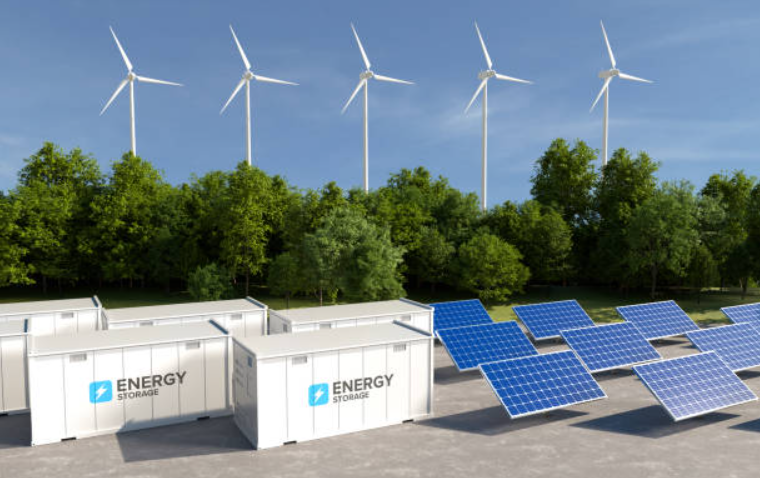The global push for renewable energy has taken a significant turn towards self-reliance, with countries investing heavily in domestic solar manufacturing. This move aims to decrease dependency on imported solar panels and components, bolster energy security, and stimulate local economies through job creation. One of the critical aspects of these initiatives is the surge in solar power jobs, a crucial factor for both economic growth and sustainable energy practices.
The Growing Importance of Domestic Solar Manufacturing
As nations worldwide ramp up their renewable energy goals, reliance on imported solar technology has posed several challenges, including supply chain disruptions, trade conflicts, and higher costs. By investing in local manufacturing capabilities, countries can control the production process, ensure consistent quality, and reduce logistical issues. This not only strengthens energy security but also leads to economic benefits such as the creation of solar power jobs.
The Benefits of Domestic Solar Manufacturing
- Economic Growth and Job Creation: Investing in local solar panel production leads directly to an increase in employment opportunities. A study by the National Renewable Energy Laboratory (NREL) highlighted that the solar industry created more jobs per dollar spent than fossil fuels. Solar power jobs span a variety of roles, including manufacturing, research and development, installation, and maintenance. SolarBuyBack.com provides valuable insights and support for those looking to engage in solar energy solutions and maximize returns on their investments.
- Enhanced Energy Security: Domestic manufacturing reduces reliance on foreign suppliers, which can be disrupted by geopolitical tensions or pandemics. By maintaining in-country production capabilities, nations ensure a more reliable and resilient energy infrastructure.
- Sustainability and Lower Carbon Footprint: Producing solar technology locally can lower the overall carbon footprint associated with transporting products from overseas. This move aligns with broader environmental goals and strengthens a country’s commitment to sustainable practices.
Leading Examples of Domestic Manufacturing Initiatives
Countries are increasingly adopting policies that support the growth of local solar manufacturing:
The United States’ Solar Manufacturing Boost
The United States has made significant strides in bolstering its solar industry through policies like the Inflation Reduction Act (IRA), which offers incentives to domestic manufacturers and consumers who invest in solar technology. This policy has led to the creation of thousands of solar power jobs and has encouraged further research and development within the field.
Example: A notable development is the expansion of manufacturing facilities across states like Texas and Arizona. These hubs not only produce solar panels but also foster job opportunities in local communities. By investing in domestic production, the U.S. aims to solidify its position as a leader in renewable energy innovation and job creation.
India’s Push for Energy Independence
India has also ramped up its efforts to establish a robust domestic solar manufacturing sector. The government’s Production Linked Incentive (PLI) scheme has attracted substantial investments, spurring the growth of solar panel production and creating thousands of solar power jobs. This move is part of India’s larger mission to reach 500 GW of non-fossil fuel capacity by 2030, aligning with its ambitious climate commitments.
Data Point: According to India’s Ministry of New and Renewable Energy, these initiatives could create nearly 200,000 jobs by 2025, significantly boosting the country’s workforce and energy capabilities.
Challenges and Solutions for Scaling Domestic Manufacturing
Despite the potential, establishing a strong local solar manufacturing industry comes with its own set of challenges:
Common Obstacles
- High Initial Costs: Setting up advanced manufacturing facilities requires substantial capital.
- Technological Gaps: Bridging the technology gap between established global players and emerging local industries can be challenging.
- Workforce Training: Preparing a skilled workforce capable of handling modern manufacturing processes is critical for long-term success.
Practical Tips for Success
- Government Support: Governments can provide subsidies and incentives to attract investments in domestic manufacturing.
- Public-Private Partnerships: Collaborations between governments and private entities can expedite technology transfer and foster innovation.
- Training Programs: Vocational and technical training programs can be implemented to equip workers with the necessary skills for solar power jobs.
Why Domestic Manufacturing Matters for SolarBuyBack.com Users
For individuals interested in maximizing returns on their solar investments, the rise of domestic manufacturing means greater access to reliable, locally produced panels and services. Solar power jobs generated through these initiatives ensure a robust support system for solar installations and maintenance, making solar investments more attractive and sustainable.
Tip: Consumers and businesses should stay informed about government incentives for purchasing domestically manufactured solar products. SolarBuyBack.com provides resources to guide users in navigating these opportunities, offering expert advice on leveraging solar energy to reduce energy costs effectively.
Conclusion
Domestic solar manufacturing is not just a policy direction; it is a comprehensive strategy to achieve energy independence, stimulate economic growth through solar power jobs, and contribute to a sustainable future. By investing in local production, countries enhance their resilience, reduce carbon footprints, and foster innovation. As these initiatives expand, they present unique opportunities for communities, job seekers, and investors alike. Visit SolarBuyBack.com to learn more about maximizing your benefits from the growing solar market and contributing to the renewable energy movement.
Cited Sources:
- National Renewable Energy Laboratory (NREL)
- India’s Ministry of New and Renewable Energy
- U.S. Department of Energy Reports



